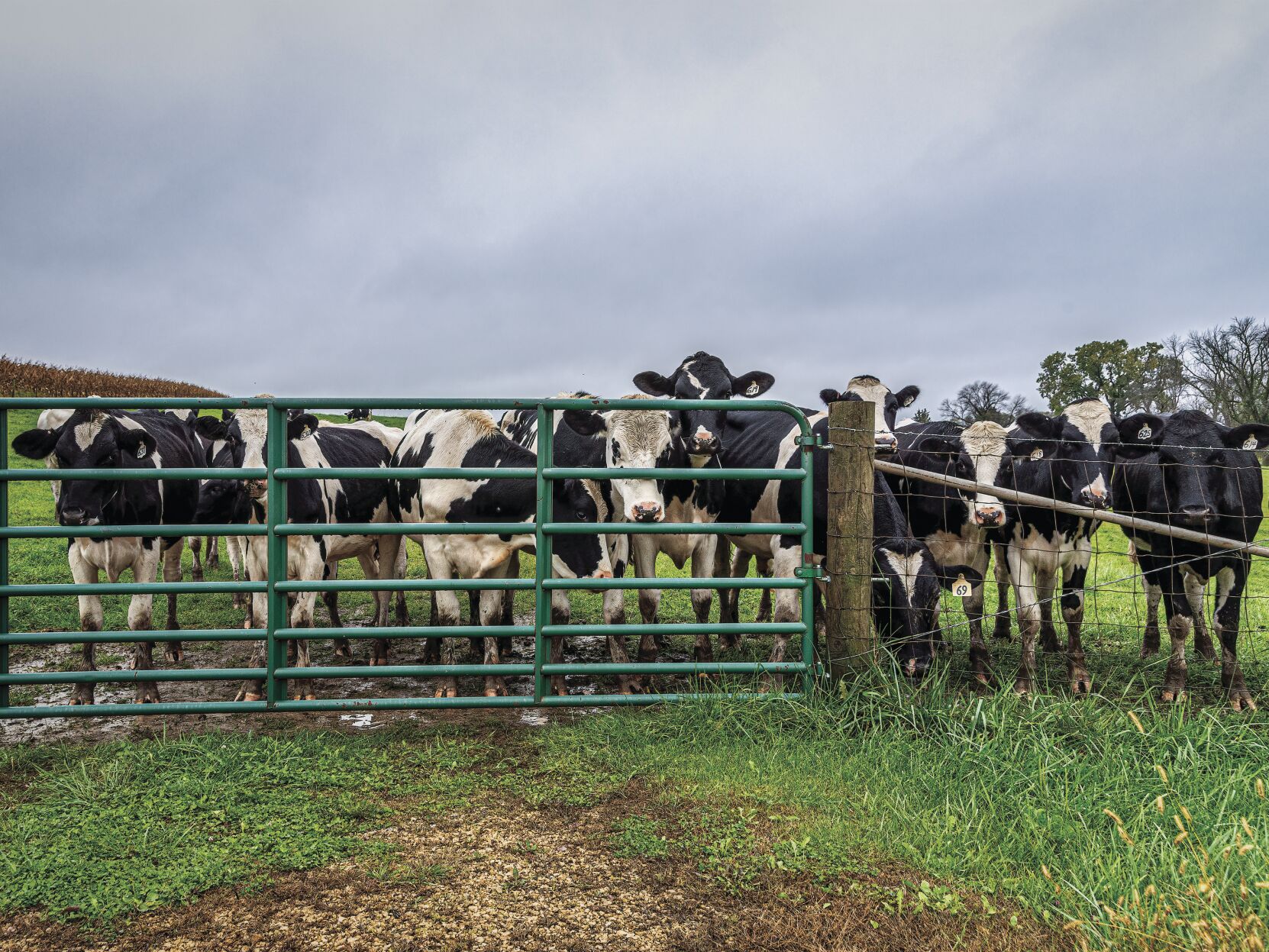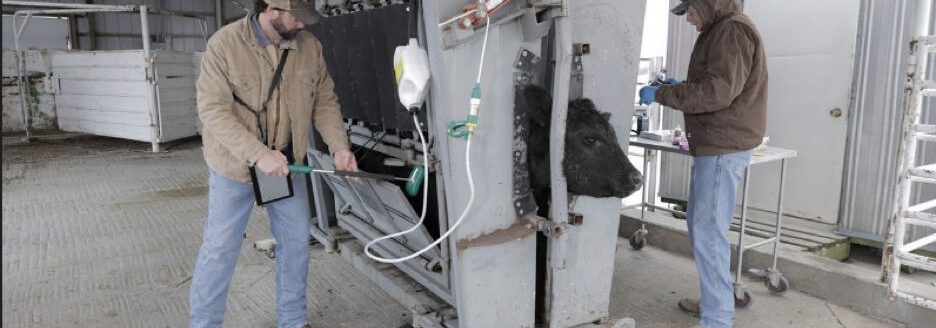If you raise cattle, you don’t need to be told that the meat industry has been targeted by some powerful propaganda in recent years.
You may have had a nagging feeling that something wasn’t quite right about what you were hearing. You may have seen widely repeated statistics making various claims about livestock production. Maybe you even have family members who have gone vegan or challenged you about why you raise meat. After all, you’re “killing the planet”—aren’t you?
GHG guru
Frank Mitloehner, Ph.D., has a mission to make sure we have the science-based facts on the real impacts of meat production on climate. Mitloehner is a professor and air quality Extension specialist at the University of California, Davis. He earned his master’s in agricultural engineering and animal science at the University of Leipzig, Germany and did further graduate studies at the University of Goettingen before completing his doctorate in animal science at Texas Tech University in Lubbock, Texas. His main research specialty is air quality research related to livestock production, especially quantification of ammonia, dust and odor emissions in dairies, beef feedlots and poultry operations, all in the service of more humane environments for animals.
In the past few years, Mitloehner has taken on the mission of spreading the word on the actual impacts of modern meat production on the climate, especially through methane emissions. He founded a research and advocacy center, the CLEAR foundation, at UC Davis whose website, he says, gets five times the internet traffic of the university’s main website.
Mitloehner’s approach is strictly science based. He doesn’t deny that animal agriculture and its emissions have some adverse impacts on the atmosphere, nor does he deny that livestock raisers can do better. He strongly supports better feed for dairy cows to reduce emissions and the use of digestors in dairy operations.
He does claim, though, that modern methods of raising livestock are not only the safest and most humane, but the best for the environment, and that if we really care about the environment—since it’s unlikely that the entire planet will give up meat, especially in developing countries where per capita meat consumption is steadily rising—we will work to spread these practices overseas.
Global averages useless
Mitloehner began a recent Top Farmer webinar presentation for Purdue University by criticizing widely repeated charts and graphs that purport to show the “global average” climate impacts of various ag products per kilogram like meat, dairy or plants. That’s because global averages skew the vast difference in agricultural practices and efficiency between developed and developing countries, giving a false impression that practices in the developed world contribute an outsized share of emissions.
“A chart that showed global averages of car drivers would be meaningless, if it averaged drivers in rich countries with poor countries,” he said. “Global averages tell us next to nothing” about farm practices.
Mitloehner said, “Eighty percent of all livestock related GHG impacts globally stem from developing countries, and only 20% from developed countries.” All agricultural activities combined in the United States contribute about 10% of our annual GHG emissions, with animal ag at 4%. By contrast, energy contributes 73.7% of all emissions globally.
Sustainable dairy cows
Dairy cows are a prime example of what Mitloehner is talking about. They are often singled out by critics of livestock raising. In 1867, he says, the U.S. had a dairy herd of about 9 million cows serving a population of about 35 million people. The dairy herd reached its peak after World War II when it hit 25 million cows. Yet today, it’s back down to 9 million dairy cows—the same size as in 1867, but producing 60% more milk than those 25 million cows, thanks to modern production methods. That herd is efficiently serving a population that’s 10 times the size of the 1867 population. “That’s the definition of sustainability,” he told his Top Farmer listeners.
300 million cows
To put this number further into perspective, Mitloehner points out that India has 300 million cows. Because the animal is sacred to Hinduism, when dairy cows are done producing milk, they are turned loose to wander freely—and to continue to produce methane. These impacts on the atmosphere far outweigh anything done by the often-attacked “industrial” practices of North American ranchers and dairy farmers, yet we never hear of efforts by livestock critics to mitigate them.
Then again, in less-developed countries like Africa, cow herds are often the “social security” of nomadic herdsmen. They represent wealth, which means they are kept alive and not slaughtered until absolutely necessary. “If we really want to be sustainable, we need real social security in these countries to move them away from seeing livestock herds as social security,” Mitloehner said.
Another example of inefficiency is China, the world’s largest pork consumer, which has taken advantage of the recent African swine fever outbreak to consolidate and modernize its hog productions. Despite those improvements, Mitloehner claims that an astounding 40% of all Chinese hogs die before maturity.
Methane cycle
We often hear that methane is a more potent greenhouse gas than carbon dioxide. That’s true, but that fact in isolation is not very informative or helpful to understanding, says Mitloehner. Unlike CO2, methane in the atmosphere gets destroyed by a process called hydroxyl oxidation. Until recently, said Mitloehner, studies of greenhouse gases treated the two substances alike, as “stock gases” that stay relatively stable over long periods. Methane, however, is a “flow gas” that is broken down by free radicals over a 12-year period, unlike carbon dioxide, which lingers in the atmosphere between 300 and 1,000 years.
International climate bodies and the Environmental Protection Agency now use a measure called Global Warming Potential, which takes the entire cycle of a greenhouse gas into account, for periods of either 100 years or 20 years. In chapter 7 of its latest climate report, the Intergovernmental Panel on Climate Change notes, “[E]xpressing methane emissions as CO2-equivalnet emissions using GWP-100 [i.e., using a 100-year time-frame] overstates the constant effects of methane emissions on global surface temperatures by a factor of 3-4 over a 20-year time, while understating the effects of any new methane emissions by a factor of 4-5 over the 20 years following the introduction of any new source.”
What this means is that we can’t just record the amount of methane emitted in a given period. We have to balance it against the methane that is being destroyed or withdrawn from the atmosphere. Looked at this way, “emissions neutral” is an achievable goal. According to Mitloehner, it’s entirely possible for the U.S. diary herd to be “climate neutral” or stable—not contributing any “new” methane—within a decade. A report recently release by his CLEAR foundation is titled, “Pathway to Climate Neutrality for U.S. Beef and Dairy Cattle Production.” It includes a detailed discussion of the metrics of greenhouse gases and the recently adopted “GWP100” metric.
Those interested in Mitloehner’s activities and scholarship should visit his website, https://clear.ucdavis.edu/, for more information. The information you find there could make those extended family discussions about the real impact of raising livestock more lively.
David Murray can be reached at [email protected].



